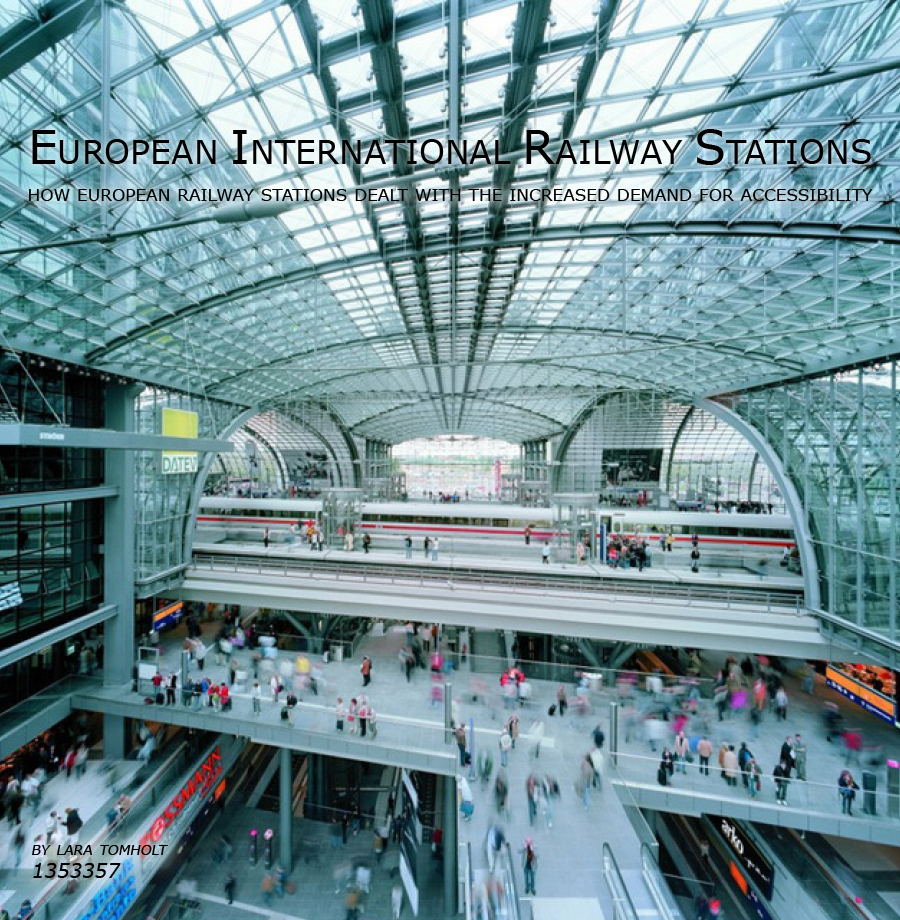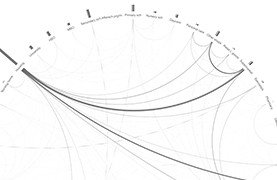European International Railway Stations
How European railway stations dealt with the increased demand for accessibility
Introduction
The railway station does not exist without its passengers. Those passengers are moving and are therefore mobile. They travel from door to door, passing through the railway stations. We can thus speak of mobile people and accessible stations.
Mobility - The ability to move freely or be easily moved (Cambridge Dictonary, 2012). If we speak of mobility we can say people are very mobile, and travel often and long distances.
Accessibility - Able to be reached or easily got (Cambridge Dictionary, 2012). Railway stations that are easily reached and easy to walk through are accessible railway stations. Accessibility is about having access to something (Boomen et al., 2012, p. 129).
Mobility and accessibility go hand in hand. This can be explained by the Land Use Transport Feedback Cycle: "The basics are simple: improvement of the traffic system results in an improved reachability of places. This increased accessibility does not yet say anything about mobility, it is just about the possibility to get from one place to the other. Well accessible places [...] lead to activities: people will live, work, shop, excercise and drink there. Because these activities are site specific, people need to travel from one place to the other. [Hence, those people get more mobile] Therefore it might be necessary to improve the traffic system, et cetera" (Boomen et al., 2012, p. 131, translated by the author).
An important question is how accessibility and mobility have influenced the development at the places where the train ride starts and ends. Through history, the station has adapted itself to increased mobility and has aimed to increase its accessibility. This known trend leads to the research question of this history thesis:
How did international European railway stations and railway station areas develop their spatial organization and change their facilities - from the first stations up until the present - in order to deal with an increased demand for accessibility?
This thesis thus does not concern architectural styles. It focusses on size, configuration and functions in the railway station as a result of the increased demand for accessibility.
Boomen (2012) mentions the cycle of mobility and accessibility. The structure of this thesis is based on this cycle and the impact of those factors on railway station design. Figure 3 shows the Railway station accessibility cycle. It is a loop which has been followed over and over again over the last centuries. "As prosperity increases and incomes rise, people want to travel further and faster" (Pol, 2002, p.10). This trend has roughly ceaselessly continued in the history of railway stations. With increased number of passengers the demand for accessibility rises. This will result in adaptation of rail timetables and train capacities. With more and bigger trains, more people will be able to reach the station and in a shorter time span. Hence, the accessibility of the station increases. Consequently the need arises to adapt the railway station to that change: the station might need to be enlarged, the functions in it should possibly change or increase in number, the configuration of all station elements and the connection with other transport modes should perhaps be improved. Finally, an upgraded railway station is likely to be more attractive for passengers to use, and as a result the passenger number will increase again, closing the cycle of railway station accessibility.
The chapters in this thesis follow the steps in this cycle. The first chapter is part of step (3) "transport innovation" of the Railway station accessibilty cycle, and covers the situation of railway tracks and the positioning of the railway station accordingly. The costruction of railway tracks is part of transportation network innovation and is a result of an increased demand for regional and national accessibility.
Chapter 2 on railway station typologies explains how railway networks define the shape and main organisation of the railway station building. This chapter is meant to provide knowledge on why the main organisation of railway stations differ from each other, and provides a basis for understanding the following research and analysis of the thesis.
Chapter 3 covers both step (4) "Time space convergence" and (5) "Increased number of passengers". The increased amount of operating trains is a result of increased space on railway tracks and measurements taken to improve the timetables. The amount of operating trains and railway passengers are very closely related.
Part (5) "Spatial adaptation" is covered in the three final chapters: chapter 4 explains the spatial adaptation of the platforms, chapter 5 the adaptation of the railway station building and chapter 6 how the railway station is connected to other modes of transport in order to improve accessibility.



